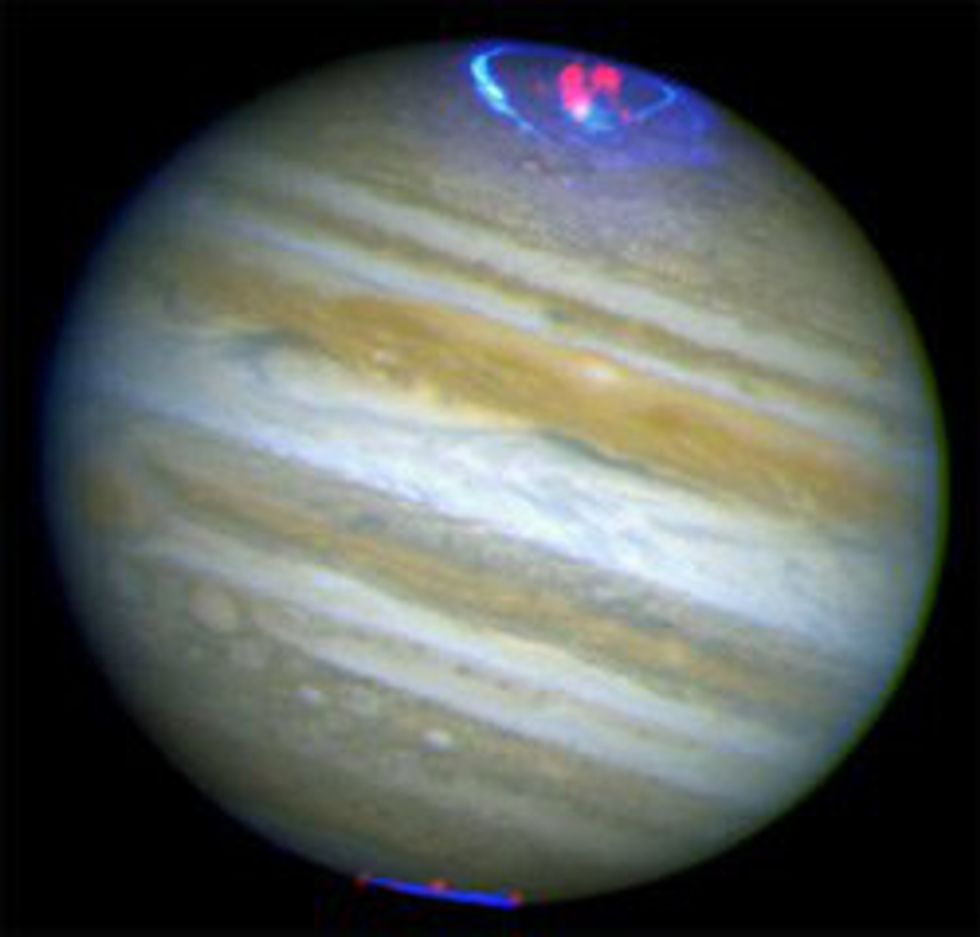Imagine the Alaskan northern lights, or aurora borealis, but on a scale thousands of times bigger, brighter and more powerful than what we are familiar with on Earth. On June 30, 2016, NASA’s Hubble Space Telescope captured such a display in Jupiter’s atmosphere.
The telescope is an international project through NASA and The European Space Agency and is managed by NASA's Goddard Space Flight Center in Greenbelt, Maryland, in the Unites States. The detections of light are possible because of Hubble’s ultraviolet imaging capabilities. It is also equipped with a Spectrograph to determine the movements and massive area of the glowing auroras. Hubble has been closely observing Jupiter for the past several months and the planet’s spectacular light show proved the studying to be worth while.
Video from the beautiful show can be viewed here.
Unlike Earth’s auroras, which are caused by particles from the sun and only temporary, Jupiter’s glowing lights are self-generated and typically constant. When high-energy particles combine with gaseous atoms near the northern and southern poles in Jupiter’s atmosphere, beautiful waves of colorful, vibrant lights are the result. The source of the combination comes from polar winds from the sun and particles thrown into orbit from Jupiter’s volcanic moon, Io. These factors, along with a magnetosphere (a magnetic field that controls the motion of charged particles) 20,000 times stronger than Earth’s, are why such lights form. The images and video captured on June 30 resulted from abnormally high intensity particles from the moon Io.
Io gets "caught in this gravitational tug of war between Jupiter and the two other large moons, Europa and Ganymede," says Andrew Steffl, from the Southwest Research Institute in Boulder, Colorado. "It gets squished and squashed, which drives internal heat just like if you bend a paper clip back and forth in your hands.”
With the arrival of the space probe Juno into Jupiter’s orbit on July 4, 2016, the timing of the planet’s aurora observation is impeccable. As Hubble measures the lights, the probe is able to test the solar wind and particles that cause the light itself.
According to NASA, “the new observations and measurements made with Hubble and Juno will help to better understand how the sun and other sources influence auroras.”
"These auroras are very dramatic and among the most active I have ever seen" said Jonathan Nichols, principal investigator of the study and physics lecturer at the University of Leicester. "It almost seems as if Jupiter is throwing a firework party for the imminent arrival of Juno."






















